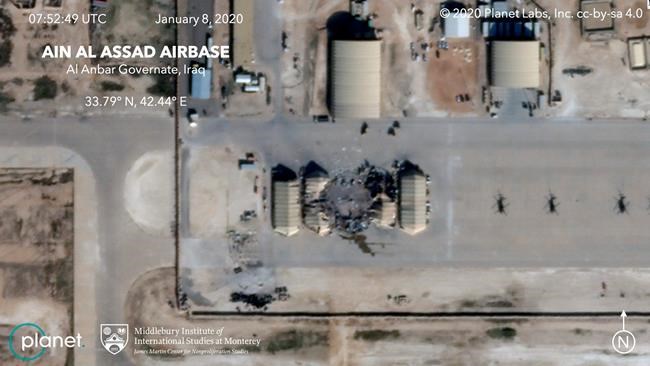Iran attack underscores need for new air defences: Canadian Army
Advertisement
Read this article for free:
or
Already have an account? Log in here »
To continue reading, please subscribe:
Monthly Digital Subscription
$0 for the first 4 weeks*
- Enjoy unlimited reading on winnipegfreepress.com
- Read the E-Edition, our digital replica newspaper
- Access News Break, our award-winning app
- Play interactive puzzles
*No charge for 4 weeks then price increases to the regular rate of $19.00 plus GST every four weeks. Offer available to new and qualified returning subscribers only. Cancel any time.
Monthly Digital Subscription
$4.75/week*
- Enjoy unlimited reading on winnipegfreepress.com
- Read the E-Edition, our digital replica newspaper
- Access News Break, our award-winning app
- Play interactive puzzles
*Billed as $19 plus GST every four weeks. Cancel any time.
To continue reading, please subscribe:
Add Free Press access to your Brandon Sun subscription for only an additional
$1 for the first 4 weeks*
*Your next subscription payment will increase by $1.00 and you will be charged $16.99 plus GST for four weeks. After four weeks, your payment will increase to $23.99 plus GST every four weeks.
Read unlimited articles for free today:
or
Already have an account? Log in here »
Hey there, time traveller!
This article was published 08/01/2020 (2163 days ago), so information in it may no longer be current.
OTTAWA – The launching of Iranian missiles against a base housing Canadian soldiers in Iraq has highlighted a long-standing deficiency for the Canadian Army: the inability to defend against air attacks such as aircraft, rockets and drones.
Iran on Tuesday fired missiles at two military bases in Iraq, including one near the northern city of Irbil that has housed Canadian troops for more than five years as part of the fight against the Islamic State of Iraq and the Levant.
No one was injured in the missile attack, which was in retaliation for the killing of Iranian Maj.-Gen. Qassem Soleimani by a U.S. drone last week. Prime Minister Justin Trudeau confirmed Wednesday that Canadian soldiers were at the base at the time of the Iranian attack.

Canadian troops in Iraq and elsewhere are routinely deployed with allies who have what are called “ground-based air defences,” or GBADs in military parlance, which can include everything from missile interceptors and anti-aircraft guns to electronic jamming devices and lasers.
But Canadian Army spokesperson Karla Gimby said the Iranian missile attack nonetheless demonstrated why a new air-defence system is one of the army’s top procurement priorities.
“Iran launching missiles underscores the need for militaries — and the Canadian military — to have GBADs,” Gimby said Wednesday, though she added: “It is too early to tell if recent events will impact the GBAD procurement timeline.”
Successive Canadian Army commanders have raised the lack of air defences for frontline troops since the military retired the last of its anti-air weapons in 2012.
However, efforts to acquire a new system have been stuck in neutral for years. The Department of National Defence is not expecting delivery of a new system until at least 2026, which is projected to cost between $250 million and $500 million.
Officials have previously suggested that part of the problem is trying to figure out exactly what threats the system will be designed to counter, particularly given rapid advances in technology.
In a recent interview with The Canadian Press, Canadian Army commander Lt.-Gen. Wayne Eyre referenced Iran’s use of drones to attack Saudi Arabia’s largest oil facility in September as one new airborne threat on the battlefield.
“No army in history has gone to war with all of the resources that it wanted, all the capabilities that it wanted,” Eyre said. “That being said, GBAD is one of the ones that I am most concerned about because it is not just a capability shortfall, it’s a capability gap. We don’t have it.”
When the Canadian military put away the last of its anti-air weapons in 2012, it was on the assumption that Canada and its allies would have air superiority in any battle and not have to worry about airborne attacks, said defence analyst David Perry of the Canadian Global Affairs Institute.
“The Taliban never had any of that kind of stuff. (ISIL) really didn’t have any of that kind of stuff,” Perry said. “So we’ve been deploying in places where it hasn’t been a problem.”
The Iranian attack demonstrates the importance of Canadian troops on the ground being able to protect against airborne threats, he said.
This report by The Canadian Press was first published on Jan. 8, 2020.


